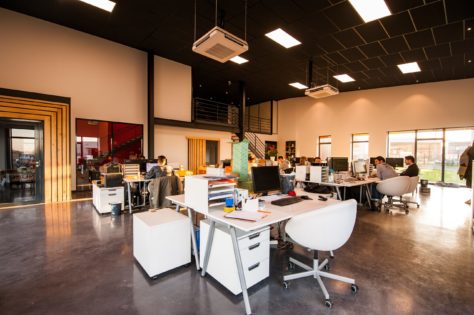The massive surge in working from home since the beginning of 2020 has changed the US workforce in a multitude of ways. Most employees and their employers seem to view this switch as a positive, but there are naturally some new hurdles to overcome.
This shift from office to home has been a dramatic adjustment for the entire country. In 2019, only 4.1% of the US workforce was working remotely. That percentage grew to a massive 69% in the height of the pandemic, and it has now settled at 42% in 2021. Forty-two percent is still a very significant change and employees and their employers are all working to balance the good and bad of this new normal.
The majority of employees express overall satisfaction with the shift to home. They report having the right tech and adequate workspace. They are still meeting project deadlines and doing so without the usual interruptions for an office environment. They’re motivated to get their work done, and they’re experiencing greater job satisfaction, which also leads to lower turnover rates, which is obviously good for everyone.
Employers are experiencing the benefits of significant decreases in overhead costs. Fewer in-house employees means less office space required to run the business. It also means a lowered cost in office supplies. On average, businesses can save 22k per full time employee and 11k per part time employee to the tune of $700 billion per year, nationwide.
The perks of working from home are making it worth maintaining this new normal long term, however employees and employers are struggling to balance out some of the new issues that weren’t as prevalent when everyone was based in the home office. One of the major issues is a new lack of trust between employer and employee, and even down the leadership pipeline. Not only this, but managers are struggling with new forms of communication.
The rising lack of trust has given way to an excess of micromanagement, so that, in 2021, 1 in 5 employees report micromanagement as the most stressful part of their jobs. Micromanagement is never a good solution to trust issues, and it causes significant problems for both employees and their employers.
Seventy-one percent of employees believe that micromanagement negatively affects their productivity, and 69% will consider changing jobs due to this single issue. The decreased morale results in higher turnover rates, less productivity, and the costs of replacing employees.
Replacing several tasks with AI can help to increase and balance out trust, to create a more cooperative and productive work environment. Automating things like timesheets, payroll apps, and scheduling removes the human element from these tasks which require no intuition or problem-solving. An environment of trust is an environment of productivity and creativity.

Source: TrackTime24.com

